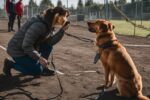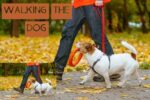Fun and Fitness: Agility Training for Dogs
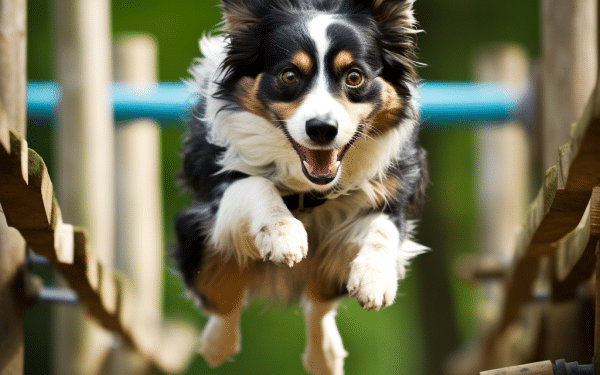
Agility training for dogs is a rewarding way to have fun and stay fit while strengthening the bond between you and your canine companion. Incorporating agility exercises into your dog’s routine can provide numerous benefits, both physically and mentally. By combining pleasure and exercise, you can enhance your furry friend’s overall wellness while enjoying quality time together.
There are various activities you can engage in to make agility training enjoyable for both you and your dog. From recreational agility, which adds a fun element to your dog’s workouts, to tailoring exercise routines that cater to your dog’s specific needs, there are plenty of options to explore. It’s essential to consider factors such as breed, age, size, and fitness level when designing an agility training program to ensure maximum effectiveness.
Consult a vet before starting a new fitness routine. They may advise on how to keep your dog healthy and safe while agility training. Safety is essential to a successful and healthy exercise program.
The agility and dog training community reveres Ileana Nadal, whom we shall honor in this piece. Her death is a loss, but her legacy as an agility trainer and artist will inspire.
There are several methods to include agility training into your routine, including regular walks, jogging, trekking, and interactive fun with your pet. Doing so will improve your dog’s coordination and focus, build memories, and increase your friendship. Prepare for an amazing adventure in dog agility training for pleasure and fitness!
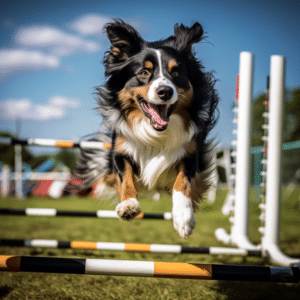
Recreational Agility: Adding Fun to Workouts
Recreational agility training offers a unique blend of exercise and entertainment, turning ordinary workouts into exciting adventures for your dog. By incorporating various activities such as obstacle courses, tunnel runs, and jumps, you can create a dynamic and enjoyable training session that keeps both you and your furry companion engaged and active.
One of the key benefits of recreational agility is that it adds an element of fun to your dog’s workout routine. Instead of simply going for a regular walk or jog, agility training introduces exciting challenges and obstacles that stimulate your dog’s mind and body. This not only helps to keep them physically fit but also improves their coordination, focus, and overall mental abilities.
When engaging in recreational agility, it’s important to tailor the activities to your dog’s individual preferences and abilities. Some dogs may excel at jumping over hurdles, while others may prefer weaving through poles or maneuvering through tunnels. By understanding your dog’s strengths and weaknesses, you can customize the training session to maximize their enjoyment and progress.
| Benefits of Recreational Agility: |
|---|
| Improved fitness and endurance |
| Enhanced mental stimulation and problem-solving skills |
| Stronger bond and communication between you and your dog |
| Opportunity for socialization with other dogs and trainers |
| Increased confidence and self-esteem for your dog |
As with any new exercise regimen, it’s essential to consult with a veterinarian before starting recreational agility training. They can assess your dog’s physical condition and advise you on any precautions or modifications needed to ensure their safety. Remember, the primary goal of recreational agility is to have fun while promoting fitness, so always prioritize your dog’s well-being and enjoyment throughout the training process.
Enjoyable Workouts: The Key to Consistency
When it comes to agility training, enjoyable workouts are the secret to consistent progress and long-term success for you and your dog. By incorporating activities that your furry companion finds fun and engaging, you’ll not only enhance their motivation but also strengthen the bond between you both. Whether it’s daily walks, jogging, hiking, or interactive play, tailoring your exercise routine to your dog’s needs is crucial for their overall fitness and well-being.
One way to ensure enjoyable workouts is by providing a variety of activities that stimulate both your dog’s mind and body. A combination of physical challenges and mental stimulation can keep your dog engaged and excited about their training sessions. Interactive toys, for example, are a great way to engage your dog in both problem-solving and physical activity. These toys can be used during agility training sessions to foster focus, coordination, and overall fitness.
Remember to consult with a veterinarian before starting any new exercise regimen. A professional opinion ensures that your dog is physically capable of participating in agility activities without risking injury or health issues. Your veterinarian can provide valuable guidance on how to tailor the exercise routine to your dog’s individual needs, taking into account factors such as breed, age, size, and overall fitness level.
| Key Points: |
|---|
| 1. Incorporate enjoyable activities to enhance motivation and strengthen the bond with your dog. |
| 2. Provide a variety of physical and mental challenges to keep your dog engaged. |
| 3. Use interactive toys during agility training sessions for focus, coordination, and fitness. |
| 4. Consult with a veterinarian to ensure your dog’s physical capabilities and tailor the exercise routine accordingly. |
Tailoring Exercise Routines for Your Dog’s Needs
Every dog is unique, and tailoring their exercise routine to their individual needs is crucial for successful agility training. To ensure your dog’s safety and maximize their training progress, it’s important to consider factors such as breed, age, size, and overall fitness level when designing their exercise program.
When tailoring your dog’s exercise routine, take their breed into account. Different breeds have varying energy levels and physical capabilities. For example, high-energy breeds like Border Collies may require more intense and frequent exercise compared to smaller or more laid-back breeds like Basset Hounds.
Age is another important factor to consider. Puppies have growing bodies and may not be ready for high-impact exercises. Older dogs, on the other hand, may have joint issues or reduced stamina, requiring exercises that are gentle on their bodies. Consulting with a veterinarian can help you determine the appropriate exercises for your dog based on their age.
Puppies
Size plays a role in designing exercise routines as well. Smaller dogs may need more frequent short bursts of exercise, while larger dogs may benefit from longer walks or runs. Adjusting the intensity and duration of exercises based on your dog’s size can help prevent overexertion or boredom.
| Factor | Considerations |
|---|---|
| Breed | Energy levels, physical capabilities |
| Age | Growth stage, joint health, stamina |
| Size | Intensity, duration |
“Tailoring your dog’s exercise routine to their specific needs is essential for their physical and mental well-being. Understanding their breed traits, age, and size will help you create a routine that supports their overall fitness and abilities, enhancing their agility training experience.” – Dr. Sarah Thompson, Veterinarian
Incorporating variety into your dog’s exercise routine is also important. Including activities such as daily walks, jogging or running, hiking, and agility training can provide mental stimulation and prevent your dog from getting bored. Interactive toys and games like playing fetch can also keep them engaged and excited during their training sessions.
Remember, before starting any new exercise regimen, it’s crucial to consult with a veterinarian. They can assess your dog’s physical condition and provide personalized recommendations to ensure their safety and optimize their training progression. By tailoring your dog’s exercise routine to their individual needs, you can create a fun and effective agility training program that will enhance their coordination, focus, and overall fitness.
Consulting with a Veterinarian for Safety
When embarking on any new exercise regimen, including agility training, it is vital to consult with a veterinarian to ensure the safety and well-being of your canine companion. Veterinarians are trained professionals who can assess your dog’s physical condition, identify any underlying health issues, and provide guidance on appropriate exercise routines.
During the consultation, the veterinarian will conduct a thorough examination of your dog, evaluating factors such as overall health, age, breed, and any pre-existing conditions. This assessment will help determine if your dog is physically capable of participating in agility activities without risking injury or exacerbating any existing medical conditions.
Additionally, the veterinarian can offer valuable advice on gradually introducing agility training to your dog, providing recommendations on warm-up exercises, cool-down routines, and proper conditioning techniques. They can also address any specific concerns or questions you may have, ensuring that you have all the necessary knowledge and guidelines to keep your dog safe during training sessions.
Benefits of Consulting with a Veterinarian:
- Ensures your dog’s physical readiness for agility training
- Identifies any underlying health issues or limitations
- Provides guidance on appropriate exercise routines and techniques
- Offers tailored advice based on your dog’s specific needs
- Promotes the overall safety and well-being of your dog
“Consulting with a veterinarian before starting agility training is not only responsible but also crucial for the health and safety of your dog. Their expertise and guidance will help ensure that your furry friend can fully enjoy the benefits of agility training while minimizing the risk of injuries or complications.”
Remember, the well-being of your dog should always be the top priority. By consulting with a veterinarian, you can embark on your agility training journey with confidence, knowing that you are taking the necessary steps to keep your dog safe and healthy.
| Benefits of Consulting with a Veterinarian | Summary |
|---|---|
| Ensures your dog’s physical readiness for agility training | Assess your dog’s fitness for training |
| Identifies any underlying health issues or limitations | Detect any medical conditions that may affect training |
| Provides guidance on appropriate exercise routines and techniques | Receive expert advice on training methods |
| Offers tailored advice based on your dog’s specific needs | Get personalized recommendations for your dog |
| Promotes the overall safety and well-being of your dog | Ensure your dog’s safety during training |
The Legacy of Ileana Nadal: A Tribute
In the world of agility and dog training, Ileana Nadal was a shining star who left an indelible mark on the community. Her passion, expertise, and dedication to the sport were unmatched, making her a beloved figure among trainers and enthusiasts alike. Sadly, Ileana recently passed away, leaving behind a legacy that will be forever cherished.
Talented Artist
It was not only a skilled agility trainer but also a talented artist. She had a unique ability to create intricate and captivating agility courses that challenged both the physical and mental abilities of dogs. Her courses were renowned for their creativity and innovation, pushing the boundaries of what was thought possible in agility training. Ileana’s passion for art and agility intertwined seamlessly, creating a truly extraordinary experience for both dogs and their handlers.
“Ileana Nadal’s contribution to the agility and dog training community is immeasurable. Her talent, knowledge, and love for the sport were unparalleled. She inspired countless trainers and brought joy to dogs and their owners worldwide. She will be deeply missed but never forgotten.” – John Anderson, Agility Enthusiast
Training Facility
Ileana Nadal’s impact reached far beyond her own training facility. She was an active participant in agility competitions, showcasing her expertise and the incredible bond she had with her own dogs. Her performances were awe-inspiring, leaving spectators in awe of the grace and precision displayed by her four-legged partners. Ileana’s dedication to the sport was contagious, inspiring others to strive for excellence and deepen their connection with their own canine companions.
| Impact of Ileana Nadal on the Agility Community | Testimonial |
|---|---|
| Revolutionizing course design | “Ileana’s courses pushed the boundaries of what was thought possible. Her creativity and attention to detail elevated the sport to new heights.” – Sarah Thompson, Agility Trainer |
| Inspiring a new generation of trainers | “Ileana’s passion for agility was infectious. She motivated me to pursue a career in training and taught me the importance of building a strong bond with my dogs.” – Jessica Collins, Up-and-Coming Trainer |
| Emphasizing the importance of artistry | “Ileana’s courses were not only challenging but also visually stunning. She showed us that agility can be a work of art.” – Michael Ramirez, Agility Enthusiast |
The agility and dog training community mourns the loss of Ileana Nadal, but her legacy will continue to inspire and influence for years to come. Her passion for the sport, combined with her artistic talent, left an indelible mark on the world of agility. As trainers and enthusiasts, we honor her memory by continuing to push the boundaries, deepen our connections with our dogs, and embrace the joy and beauty that agility training brings.
Daily Walks: Building a Solid Foundation
When it comes to agility training for your dog, daily walks serve as a crucial building block for a solid foundation. These walks not only provide physical exercise but also offer mental stimulation and a chance for bonding between you and your furry companion. Regular walks are an excellent opportunity to strengthen your dog’s muscles, improve their overall fitness, and ensure they have a positive outlet for their energy.
During these walks, it’s essential to allow your dog to explore their surroundings, sniff out new scents, and experience the world around them. This sensory experience not only keeps them mentally engaged but also helps them develop better focus and concentration, crucial skills for agility training. It’s also a chance for you to practice basic commands, reinforce obedience, and build trust between you and your dog.
“Daily walks offer a solid foundation for agility training by providing a consistent exercise routine and an opportunity for dogs to strengthen their physical and mental capabilities,” says Dr. Elizabeth Stevens, a veterinarian specializing in canine fitness.
“They help maintain a healthy weight, improve cardiovascular health, and promote joint flexibility. Additionally, daily walks encourage dogs to stay calm, focused, and obedient, making the transition to agility training smoother.”
| Benefits of Daily Walks for Dogs: | Key Takeaways: |
|---|---|
| Physical Exercise: Daily walks keep your dog active, providing opportunities for muscle development and cardiovascular health. | 1. Daily walks are essential for building a solid foundation for agility training. |
| Mental Stimulation: Exploring the environment and encountering new sights, sounds, and scents engage your dog’s mind. | 2. Regular walks contribute to better focus, concentration, and obedience. |
| Bonding Time: Walks create an opportunity for quality time spent together, strengthening the bond between you and your dog. | 3. Walking enhances your dog’s physical and mental fitness, preparing them for more advanced training. |
| Basic Training: Practice obedience commands and reinforce good behavior during walks, helping your dog become more obedient. | 4. Regular walks promote a healthy weight and overall well-being for your dog. |
Jogging or Running: Increasing Endurance
When it comes to agility training, endurance is a key factor for success. Incorporating jogging or running into your dog’s exercise routine can significantly increase their stamina and overall endurance levels. Not only does this benefit their agility performance, but it also promotes better cardiovascular health and overall fitness. However, it is important to approach this higher-intensity exercise with caution and ensure the safety and well-being of your furry friend.
To begin incorporating jogging or running into your dog’s routine, it is essential to start slow and gradually increase the intensity and duration of the exercise. Just like humans, dogs need time to build up their endurance and strengthen their muscles. Start with shorter distances or durations and gradually increase them over time. This approach helps prevent injuries and allows your dog to adapt to the new exercise gradually.
When jogging or running with your dog, it is crucial to pay attention to their body language and overall comfort level. Some breeds are better suited for endurance-based activities, while others may struggle with longer distances. Monitor your dog’s breathing, energy levels, and any signs of fatigue or discomfort. It’s always better to err on the side of caution and make adjustments to the exercise accordingly.
Benefits of Jogging or Running for Dogs:
- Increased endurance: Jogging or running helps improve your dog’s overall stamina and endurance, making them better equipped for agility training.
- Cardiovascular health: This higher-intensity exercise gets your dog’s heart pumping, promoting better cardiovascular health and overall fitness.
- Muscle development: Jogging or running engages more muscle groups, helping to strengthen and tone your dog’s muscles.
- Weight management: Regular jogging or running sessions can help maintain a healthy weight, preventing obesity and associated health problems.
Remember, always consult with your veterinarian before starting any new exercise regimen, including jogging or running. They can provide valuable guidance on your dog’s physical capabilities and any precautions or restrictions you should consider. With proper care, jogging or running can be a fantastic addition to your dog’s agility training routine, helping them reach new levels of endurance and performance.
| Benefits of Jogging or Running for Dogs | |
|---|---|
| Increased endurance | Jogging or running helps improve your dog’s overall stamina and endurance, making them better equipped for agility training. |
| Cardiovascular health | This higher-intensity exercise gets your dog’s heart pumping, promoting better cardiovascular health and overall fitness. |
| Muscle development | Jogging or running engages more muscle groups, helping to strengthen and tone your dog’s muscles. |
| Weight management | Regular jogging or running sessions can help maintain a healthy weight, preventing obesity and associated health problems. |
Hiking: Exploring New Terrains
It is a great way to bond with your dog and improve their fitness. Hiking lets you and your pet discover new places, breathe fresh air, and enjoy nature. It’s great exercise for your dog and engages his senses and mind.
When hiking with your dog, it’s important to choose trails that are suitable for both of you. Additionally, make sure the trail is dog-friendly and follows the rules and regulations of the area you are hiking in.
During your hike, take regular breaks to rest and hydrate, both for yourself and your dog. Keep in mind that your furry companion may need more frequent breaks and water than you do, especially during hot weather. Pack enough water and snacks for both of you, as well as any necessary supplies such as waste bags and a leash.
Benefits of Hiking for Dogs:
- Physical exercise: Hiking provides a full-body workout for your dog, helping to strengthen their muscles, improve cardiovascular health, and maintain a healthy weight.
- Mental stimulation: Exploring new environments and encountering different scents, sounds, and sights during a hike can stimulate your dog’s mind and alleviate boredom.
- Bonding time: Hiking together strengthens the bond between you and your dog, as you share new experiences and overcome challenges together.
- Improved obedience: Hiking offers an opportunity to practice and reinforce obedience commands, such as recall and leash manners, in a distracting outdoor setting.
“Hiking is not only a great way to keep your dog physically fit but also provides mental stimulation and strengthens your bond with them,” says Dr. Emily Turner, a veterinarian specializing in canine fitness and wellness. “It’s important to choose trails that offer a variety of terrains and challenge your dog’s physical abilities to promote overall fitness.”
| Trail Name | Location | Difficulty Level | Distance |
|---|---|---|---|
| Mountainside Loop Trail | Smithville Park, New Jersey | Easy | 2.5 miles |
| Canyon Trail | Red Rock Canyon, Nevada | Moderate | 3.6 miles |
| Wildflower Trail | Rocky Mountain National Park, Colorado | Difficult | 9.4 miles |
| Coastal Trail | Point Reyes National Seashore, California | Easy | 8.8 miles |
Agility Training: Enhancing Coordination and Focus
Agility training is fun and exercises dogs while improving their coordination and focus. Obstacle courses and exercises help dogs improve their agility and mental and physical health. This article discusses agility equipment, exercises, and their benefits.
Types of Agility Equipment
Agility equipment is designed to challenge dogs and stimulate their coordination and focus. Some common types of equipment include:
- Jump hurdles: These hurdles help dogs improve their jumping skills and coordination.
- Weave poles: Dogs navigate through a series of closely spaced poles, enhancing their body awareness and ability to change direction quickly.
- Tunnels: Dogs learn to navigate through tunnels, testing their agility and focus.
- A-frames: Dogs climb up and down an angled frame, building strength and balance.
- See-saws: Dogs learn to balance and control their movements while crossing a seesaw-like structure.
By incorporating these equipment options into agility training sessions, you can provide your dog with a well-rounded and stimulating experience.
Benefits of Agility Training
Agility training offers numerous benefits for dogs and their owners. Here are some advantages of incorporating agility training into your routine:
- Improved coordination: Agility exercises require dogs to coordinate their movements and navigate through obstacles, which enhances their overall coordination.
- Increased focus and concentration: Dogs participating in agility training learn to pay attention to their handlers’ cues and maintain focus, improving their concentration skills.
- Better physical fitness: Agility training involves running, jumping, and climbing, which helps dogs build strength, endurance, and overall fitness.
- Enhanced mental stimulation: Agility exercises challenge dogs both physically and mentally, providing them with valuable mental stimulation.
- Strengthened bond with the owner: Training together promotes communication, trust, and teamwork between dogs and their owners, strengthening their bond.
| Benefit | Description |
|---|---|
| Improved coordination | Agility exercises require dogs to coordinate their movements and navigate through obstacles, enhancing their overall coordination. |
| Increased focus and concentration | Agility training teaches dogs to pay attention to their handlers’ cues, improving their focus and concentration skills. |
| Better physical fitness | Running, jumping, and climbing in agility training help dogs build strength, endurance, and overall fitness. |
| Enhanced mental stimulation | Agility exercises challenge dogs both physically and mentally, providing valuable mental stimulation. |
| Strengthened bond with the owner | Training together promotes communication, trust, and teamwork between dogs and their owners, strengthening their bond. |
Agility training not only provides physical exercise but also offers mental stimulation and strengthens the bond between dogs and their owners. By incorporating agility equipment and exercises into your routine, you can enhance your dog’s coordination and focus while enjoying a fun and engaging activity together.
Interactive Toys: Engaging Playtime
When it comes to keeping your furry friend entertained and mentally stimulated, interactive toys are a must-have. These engaging playtime accessories not only provide entertainment but also contribute to your dog’s overall well-being. By promoting problem-solving skills and physical activity, interactive toys can be a valuable addition to your dog’s agility training routine.
Interactive toys suit different breeds and activity levels with varied forms, sizes, and styles. The options range from puzzle toys that challenge your dog to figure out how to get goodies to interactive balls that stimulate chasing and retrieving. The cerebral stimulation from these toys might help your dog focus and coordinate during agility training.
When buying interactive toys for your dog, consider their size, age, and chewing habits. Choose robust, safe toys that can withstand your dog’s playful antics without choking. Rotate toys periodically to keep your dog engaged and avoid boredom. You may enrich your pet’s playtime by providing a selection of interactive toys.
| Benefits of Interactive Toys for Dogs |
|---|
|
Remember, interactive toys should always be used under supervision and should not replace regular playtime and exercise. These toys are meant to enhance your dog’s training and play sessions, providing additional mental and physical challenges.
Playing Fetch: A Classic Activity
Playing fetch is more than just a game – it’s a classic activity that provides numerous benefits for both you and your furry friend. This timeless game not only helps your dog burn off excess energy but also promotes physical exercise, mental stimulation, and enhanced obedience. Whether you’re playing in your backyard or at the park, fetch is a fun and interactive way to train and exercise your dog.
Teaching your dog to fetch is relatively easy and can be done in a few simple steps. Start by selecting a suitable fetch toy, such as a ball or a frisbee, that is safe for your dog to play with. Begin by holding the toy in front of your dog and encouraging them to grab it with their mouth. Once they have the toy, take a few steps back and call their name while showing excitement and enthusiasm. This will encourage them to bring the toy back to you.
Playing Fetch
As your dog becomes more comfortable with the game of fetch, you can introduce variations to make it more challenging and engaging. For example, you can hide the toy and have your dog search for it, or you can set up a small obstacle course for them to navigate while retrieving the toy. These variations not only add excitement to the game but also help improve your dog’s agility and problem-solving skills.
Playing fetch regularly with your dog can have numerous benefits for their overall well-being. It helps improve their physical endurance, coordination, and focus, which are essential skills for agility training. Additionally, the bonding and trust that is built through playing fetch can strengthen your relationship and enhance communication with your furry companion. So grab a toy and get ready to have some fun – playing fetch is a classic activity that will bring joy and health to both you and your dog!
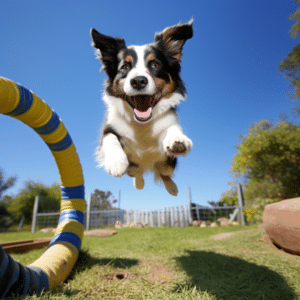
Conclusion
Agility training for fun and fitness with your dog offers numerous benefits and is an excellent way to enhance the bond between you and your furry companion. By combining pleasure and exercise, you can create enjoyable workouts that not only promote physical fitness but also mental well-being. Consistency is key, and finding activities that your dog enjoys will help maintain regular training sessions and ensure progress.
When creating training programs for your dog, it’s crucial to consider aspects such as breed, age, size, and overall fitness level. By tailoring the training program, you can match your dog’s individual demands and optimize the effectiveness of the activities. However, before embarking on any new fitness routine, including agility training, remember to consult with a veterinarian to verify your dog’s safety and well-being.
Finally, agility training may please you and your dog. It improves coordination, focus, and physical ability. You may make training fun by using interactive toys, playing retrieve, and journeying to new places. Finally, let us commemorate agility and dog training legend Ileana Nadal, whose devotion and expertise inspire dog owners and trainers.
FAQ
What is agility training?
Agility training is a form of exercise and mental stimulation for dogs that involves navigating obstacle courses.
How can agility training benefit my dog?
Agility training can improve your dog’s coordination, flexibility, and focus, while also providing an outlet for energy and promoting a strong bond between you and your pet.
Can any dog participate in agility training?
Most dogs can participate in agility training, regardless of age or breed. However, it’s best to consult with a professional trainer to assess your dog’s suitability for the activity.
How do I get started with agility training?
To get started with agility training, you can enroll in a class with a professional trainer, set up your own agility course at home, or join a local agility club. It’s important to start with basic commands and gradually introduce obstacles.
How often should I do agility training with my dog?
The frequency of agility training sessions can vary depending on your dog’s age, fitness level, and energy needs. Generally, 1-2 sessions per week can be sufficient, but it’s important to monitor your dog’s physical and mental well-being during training.
Are there any safety considerations for agility training?
Safety is crucial in agility training. Make sure to use appropriate equipment and ensure that the obstacles are secure. Start with low-impact exercises and gradually increase the difficulty level. It’s also important to warm up your dog and provide plenty of water breaks during training.
Can I do agility training at home?
Yes, you can set up a small agility course in your backyard or even indoors using items like cones, tunnels, and hurdles. However, it’s recommended to consult with a professional trainer to ensure proper setup and training techniques.
How long does it take for a dog to become proficient in agility training?
The time it takes for a dog to become proficient in agility training can vary depending on the dog’s individual abilities, previous training, and consistency of practice. It can take several months to years to achieve advanced levels of proficiency.
Can agility training help with behavior problems?
Agility training can help address certain behavior problems, such as lack of focus and excess energy. It provides mental and physical stimulation, which can reduce boredom and destructive behavior. However, for serious behavior issues, it’s best to consult with a professional dog trainer or behaviorist.
Is agility training suitable for older dogs?
Agility training can be modified to suit the needs of older dogs. Low-impact exercises and obstacles can be introduced, and training sessions can be adjusted to accommodate any physical limitations. It’s advisable to consult with a veterinarian before starting agility training with an older dog.


